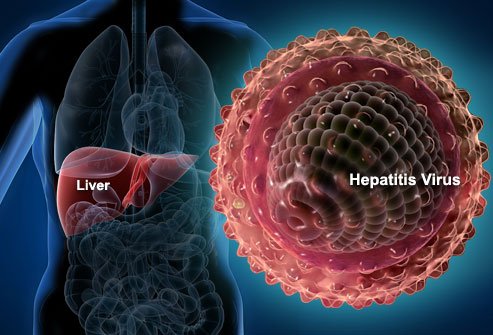Blood Borne Infection Diseases
Blood Borne Infection
Diseases
A blood-borne disease
(sometimes referred to as a blood-borne virus or BBV) is one that can be spread
through contamination by blood and other body fluids. The most common examples
are HIV, hepatitis B, hepatitis C and viral hemorrhagic fevers. Diseases that
are not usually transmitted directly by blood contact, but rather by insect or
other vector, are more usefully classified as vector-borne disease, even though
the causative agent can be found in blood. Vector-borne diseases include West
Nile Virus and Malaria. Many blood-borne diseases can also be contracted by
other means, including high-risk sexual behavior or intravenous drug use. These
diseases have also been identified in sports medicine.
Since it is difficult to determine what pathogens any given blood contains, and
some blood-borne diseases are lethal, standard medical practice regards all
blood (and any body fluid) as potentially infectious. Blood and Body Fluid
precautions are a type of infection control practice that seeks to minimize
this sort of disease transmission.
Transmission of Blood
Borne Diseases
It is very unlikely that
you will become infected through everyday social contact with another worker
who has a blood-borne virus (BBV). It is not thought that BBVs can be
transmitted via the respiratory route, although this possibility cannot be
dismissed entirely when, under laboratory conditions, (such as high titre in
vitro cultures), BBVs are present in concentrations far exceeding that found in
normal body fluids. BBVs are mainly transmitted sexually or by direct exposure
to infected blood or other body fluids contaminated with infected blood. In the
workplace, direct exposure can happen through accidental contamination by a sharp
instrument, such as a needle or broken glass. Infected blood may also spread
through contamination of open wounds, skin abrasions, skin damaged due to a
condition such as eczema, or through splashes to the eyes, nose or mouth.
Routes of transmission
Blood-borne viruses
(BBVs) are transmitted by blood, or other body fluids containing virus. This
happens when the blood or fluids enter into the body of a susceptible person.
The rate of viral transmission varies depending on how the person has been
exposed to the virus (the route of transmission), the type of virus, how much
of the virus the carrier has in their body and the immune status of the exposed
person. The more common routes of transmission include: -
- Sexual intercourse: - Common
for HBV, HIV; inefficient for HCV.
- Sharing injecting equipment.
- Skin puncture by blood-contaminated sharp objects:- Needles, instruments or glass).
- Childbirth: - The mother infects the child either before or during
birth, or through breast-feeding).
Less common routes of
transmission are:
- Contamination of open wounds:- Blood injuries during sporting activities).
- Contamination of skin lesions:- Eczema.
- Splashing of the mucous membranes of the eye, nose or mouth.
- Human bites when blood is drawn:- This may be more of a problem in certain occupations, e.g.
prison and police service, where front line workers may be exposed to
violent behavior.
- There is
also a risk of acquiring a BBV infection via blood transfusion.
- Accidental
puncture from contaminated needles, broken glass, or other sharps.
- Contact
between broken or damaged skin and infected body fluids.
- Contact
between mucous membranes and infected body fluids.
- Sexual
Contact.
- Sharing of
hypodermic needles.
- From
mothers to their babies at/before birth.
Common blood borne
diseases
Below mentioned are the
common blood borne diseases: -
- Hepatitis
B.
- Hepatitis
C.
- AIDS
(Acquired Immunodeficiency Syndrome)
Hepatitis B (HBV)
“Hepatitis” means
“inflammation of the liver,” and, as its name implies, Hepatitis B is a virus
that infects the liver. While there are several different types of Hepatitis,
Hepatitis B is transmitted primarily through blood contact. HBV initially
causes inflammation of the liver, but it can lead to more serious conditions
such as cirrhosis and liver cancer.
There is no “cure” or specific treatment for HBV, but many people who contract
the disease will develop antibodies, which help them recover and protect from
future infections. Immunity to HBV will not prevent you from getting other
types of hepatitis.
The Hepatitis B virus is very durable, and it can survive in dried blood for
over seven days. For this reason, HBV is a major concern for employees such as
custodians, laundry personnel and other employees who may come in contact with
blood or potentially infectious materials.
Hepatitis C (HCV)
Hepatitis C is a disease
of the liver caused by the hepatitis C virus (HCV). Approximately 16,000 new
HCV infections are estimated to occur each year. It is estimated that 4 million
(1.6%) Americans have been infected with HCV, of whom over 3 million are
chronically infected. Some might not be aware of their infection because 80% do
not have signs or symptoms. Infected persons serve as a source of transmission
to others and are at risk for chronic liver disease or other HCV related chronic
diseases. HCV is the most common chronic blood borne infection. HCV testing is
recommended for routine screening of asymptomatic persons based on their risk
for infection or recognized exposure. Treatments are available which have shown
effectiveness at eliminating the disease in some people.
AIDS (Acquired
Immunodeficiency Syndrome)
AIDS, or acquired immune deficiency syndrome, is caused by a virus called the
human immunodeficiency virus, or HIV. Once a person has been infected with HIV,
it may be many years before AIDS actually develops. HIV attacks the body’s
immune system, weakening it so that it cannot fight other deadly diseases. AIDS
is a fatal disease, and while treatment for it is improving, there is no known
cure. The HIV virus is very fragile and will not survive very long outside of
the human body. It is primarily of concern to custodians, healthcare
professionals, first aid responders, and researchers working with human blood
or other potentially infectious materials (OPIM). HIV is a devastating disease;
therefore, all precautions must be taken to avoid exposure.
